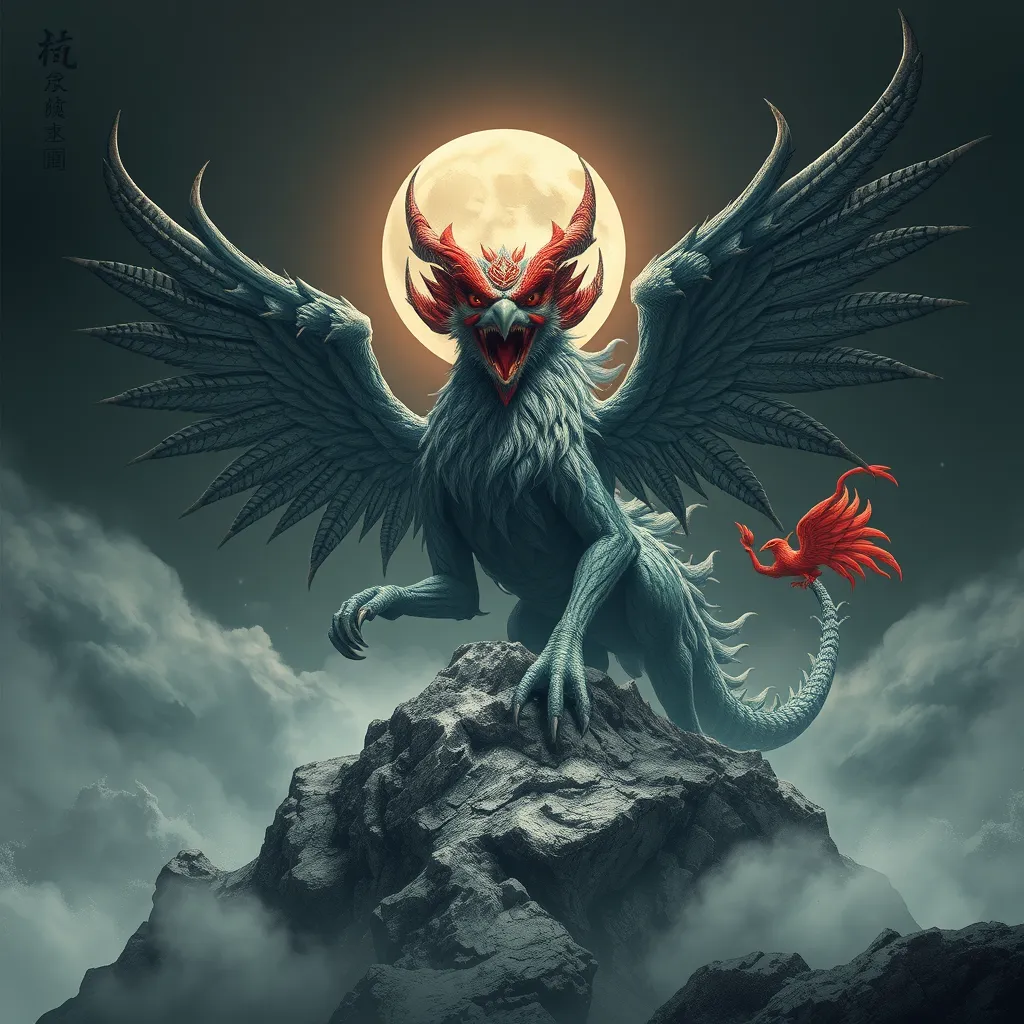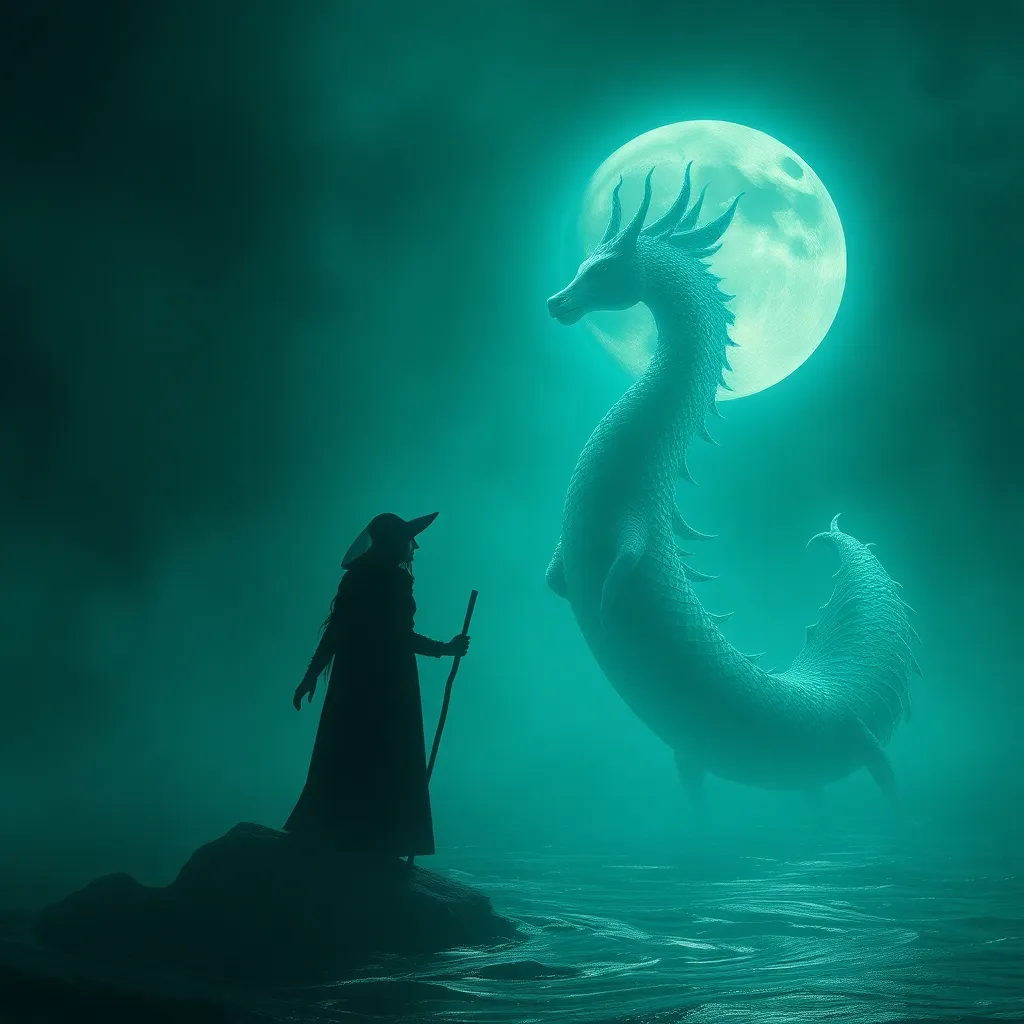The Tengu: A Mountain Chimera of Japanese Myth
I. Introduction
The Tengu, a fascinating creature from Japanese folklore, occupies a unique position in the pantheon of mythological beings. Often depicted with distinct features that blend human and bird-like characteristics, Tengu are considered intermediaries between the human realm and the spiritual world. Known for their prowess in martial arts and their cunning nature, they play a significant role in the rich tapestry of Japanese culture and mythology.
This article aims to delve into the origins, characteristics, and cultural significance of Tengu, exploring their evolution from ancient texts to modern representations across various media.
II. Historical Origins of Tengu
The historical roots of Tengu can be traced back to ancient Japanese texts, where they were first mentioned in relation to mountain spirits and deities. These early references depict Tengu as guardians of the wilderness, particularly in the mountainous regions of Japan.
The influence of Buddhism and Shinto is evident in the Tengu mythology. Initially seen as malevolent spirits, their portrayal evolved with the introduction of Buddhist teachings, which often depicted them as protectors of the dharma. Over time, Tengu transitioned from fearsome entities to more complex characters embodying both wisdom and mischief.
III. Physical Characteristics and Variations
Tengu are traditionally depicted with a distinctive appearance that includes:
- A long, beak-like nose
- Feathers or wings
- Human-like features, often resembling a monk or a samurai
There are various types of Tengu, with the most notable being:
- Karasu Tengu: Resembling a crow, these Tengu are often associated with mischief and trickery.
- Kondō Tengu: More human in appearance, they are often depicted as wise and skilled warriors.
The symbolism behind their physical traits varies; for instance, their beak represents their connection to nature and their ability to navigate both the earthly and spiritual realms.
IV. Tengu in Japanese Culture and Art
Tengu have been a popular subject in traditional Japanese art, particularly in:
- Woodblock Prints: Artists like Katsushika Hokusai and Utagawa Kuniyoshi created iconic images of Tengu, showcasing their diverse appearances and attributes.
- Paintings: Tengu often appear in various scrolls and paintings, illustrating their roles as both protectors and tricksters.
In literature and theater, Tengu have made significant appearances as well:
- Noh: Tengu are often featured in Noh plays, where they embody themes of nature, spirituality, and human folly.
- Kabuki: In Kabuki theater, Tengu characters are portrayed with flamboyant costumes and exaggerated movements, emphasizing their dynamic nature.
In contemporary culture, Tengu have found new life in anime, manga, and video games, where they are often depicted as powerful allies or formidable foes, further cementing their place in modern storytelling.
V. Tengu as Guardians and Tricksters
Tengu are renowned for their dual nature. They are not just mischievous tricksters; they also serve as guardians of the mountains and forests. This duality is reflected in many legends, where Tengu protect travelers and punish those who disrespect nature or violate sacred spaces.
Some famous Tengu legends include:
- The story of a Tengu who helps a lost traveler find their way home.
- A tale of a Tengu who punishes a greedy merchant by playing tricks that lead to his downfall.
These stories highlight the Tengu’s role in teaching moral lessons and guiding human behavior, reinforcing their importance in Japanese folklore.
VI. Tengu and their Connection to Martial Arts
The influence of Tengu extends beyond folklore into the realm of martial arts. Tengu are often seen as symbols of the warrior spirit, embodying values such as discipline, skill, and perseverance. Many legendary martial artists in Japan are said to have been trained by Tengu, gaining extraordinary abilities through this mystical connection.
Historical figures associated with Tengu legends include:
- Sōjōbō: A legendary Tengu known for his martial prowess and wisdom, often depicted as a master of the sword.
- Minamoto no Yoshitsune: A famous general who is said to have trained with Tengu, gaining extraordinary skills in battle.
This connection to martial arts illustrates how Tengu embody the values of strength and mastery, making them revered figures in the world of Japanese fighting traditions.
VII. Cultural Impact and Contemporary Relevance
In modern Japan, Tengu have experienced a resurgence in popularity, with their images appearing in various forms of media, including:
- Anime: Series like “Nura: Rise of the Yokai Clan” feature Tengu as prominent characters.
- Manga: Tengu often appear in stories exploring themes of nature and spirituality.
Globally, Tengu have piqued the interest of those fascinated by Japanese mythology, leading to their incorporation into video games and literature worldwide. Their enduring legacy continues to inspire artists, writers, and creators, fostering a greater appreciation for the intricacies of Japanese folklore.
VIII. Conclusion
In summary, Tengu hold a significant place in Japanese mythology and culture, representing a blend of nature, spirituality, and human emotion. Their evolution from feared spirits to complex characters reflects the changing landscape of Japanese beliefs and values.
The enduring legacy of Tengu invites further exploration into the rich world of Japanese folklore and its myriad creatures. As we continue to engage with these myths, we gain insights into the cultural heritage that shapes contemporary Japan and its storytelling traditions.



